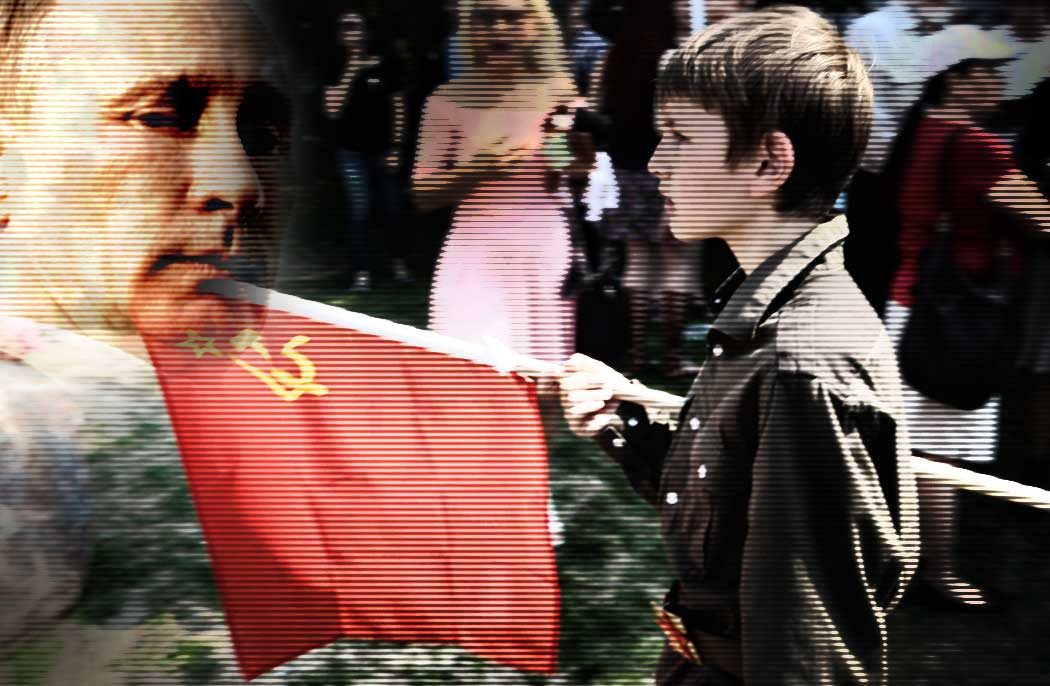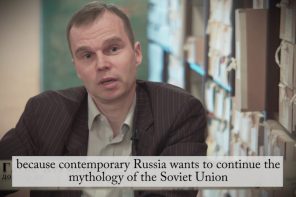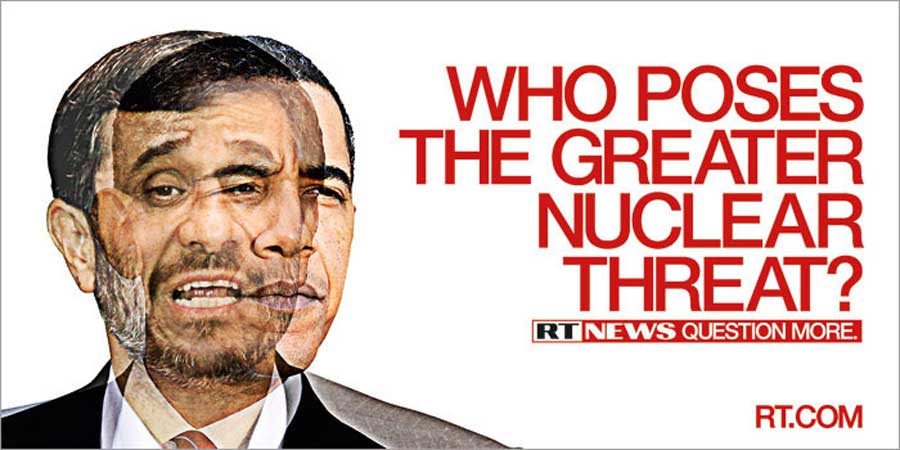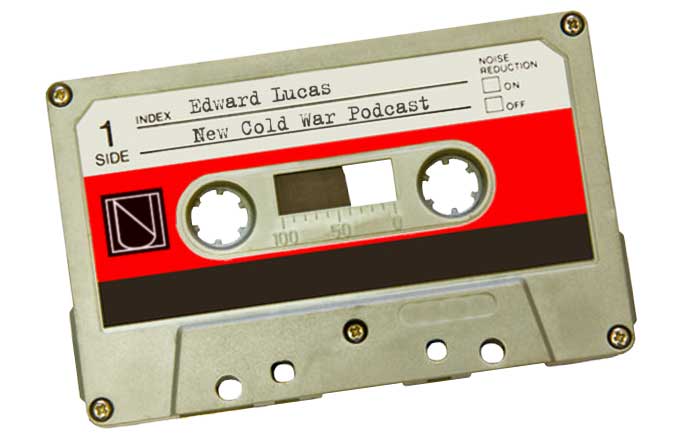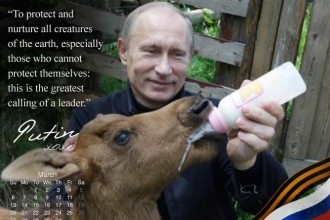Using history is merely a tactic for the Kremlin.
The West often regards Russian President Vladimir Putin as a history-conscious leader. The reasoning for this is weak. Indeed, it is strange. Not even Mussolini is considered much of a history expert, although he venerated Julius Caesar and even to Scipio Africanus over the invasion of Abyssinia.
Putin’s approach to history has some rather peculiar features. For example, 37-year-old Vladimir Luzgin, was recently sentenced to a 200,000-rouble fine for fabricating history or “knowingly spreading false information” on the basis of a new Russian law that criminalizes the “rehabilitation of Nazism”. The Facebook post that Luzgin shared stated that the Soviet Union attacked Poland on 17 September 1939 and “communists and Nazis invaded Poland together, initiating World War II, which is proof of their close cooperation”. Luzgin got away with only a scare—the maximum punishment for something like this is five years’ jail.
Renowned and esteemed professor Andrey Zubov was fired for using a historical analogy—comparing the annexation of the Crimea to the Anschluss.
When Putin talked to the press in Kultaranta, the summer residence of the Finnish president, the facts he used were random, but he is accustomed to talking to an audience that is not aware of the facts or is afraid of presenting counterarguments.
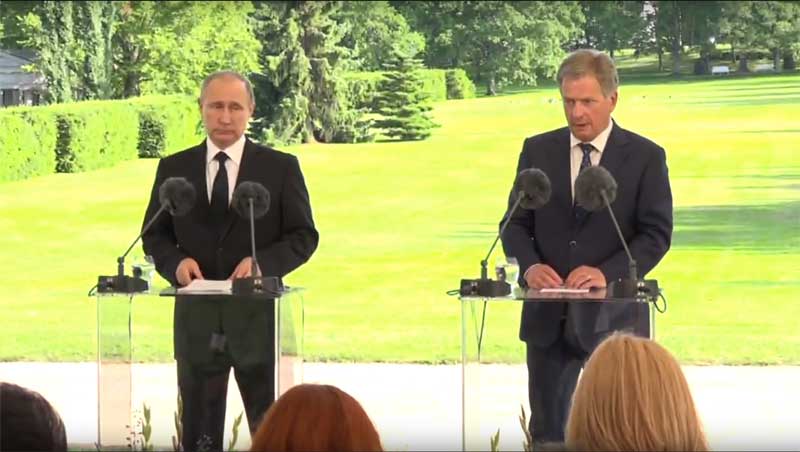
It is the same with history—I would not call him history-conscious but, rather, prone to manipulate it.
After being re-elected as president in the spring of 2012, Putin initiated a history project, intended among other things, to cement his power. Earlier that year, widespread demonstrations had shaken the authoritarian regime, so the Kremlin turned to the absolute “people’s democracy of ideas”. In reaction to the wave of protest, it started writing history that would bring people together.
…the “new consensus on history” has turned out to be very narrow—limited to Pushkin, Borodino and Victory Day. Lenin has basically been forgotten…
And so Putin used nationalism to start building a unifying identity that had been lost, and mobilizing the people with the help of mass communications and ambiguity. He demanded a “uniform historical-cultural standard”, a “canonical version of our history” and “respect for all the pages of our history” for the country. According to him, his new history textbook was meant to educate the young in a patriotic spirit “in the interests of the country and society”.
The director of the Centre for Geopolitical Expertise, Valery Korovin, explained this use of history with postmodernism. “There is no ‘objectiveʼ history; it is written only when there is a strategic concept regarding which ideological models are acceptable and which are not.” Quasi-historian and Minister of Culture Vladimir Medisnky admitted that history is always a made-up story, referring to postmodernist theorists.

Putin’s history project outlines the difference between the good postmodernism of the first generation and the bad postmodernism of the second. The first deconstructed myths, propaganda, historical clichés, spasms and dogmas. But the second erases the difference between truth and lie, and legalizes falsehoods, nihilism and manipulation. “Facts” are forged as need be. Nothing is true and everything is possible in the obscure historicism of the security services.
Putin is not considered a reader. For him, history is a game in which he is fed propagandist quotes by orthodox siloviki in his inner circle, members of the Izborsk Club and Eurasianists. The European-minded academician Dmitry Likhachov and fundamentalist monarchist Ivan Ilyin play their cards according to need, as happened with Erhardt in Germany or Napoleon in France.
I would not consider Putin an expert in utopian socialism, either—it has been claimed that he referenced both the Comte de Saint-Simon and Campanella’s utopian City of the Sun at an electoral meeting in Kuban. Both were required reading for the state exam on scientific communism that was obligatory in Soviet universities. This compulsory ideological literary curriculum was the subject of jokes even during Putin’s own studies.
The young Putin’s service at the KGB was a formative period for him. Yuri Andropov had covertly already made the ideological shift from Marxism-Leninism to Russian imperialism. Primitive “historicism” was apparent in “patriotic dissidents” who were supported by the KGB, such as Ilya Glazunov and the Pamyat movement.
“Facts” are forged as need be. Nothing is true and everything is possible
Putin’s core experience was the collapse of the German Democratic Republic (GDR). After the fall of the Berlin Wall he faced a threatening crowd in front of the KGB office in Dresden.
The fate of Muammar al-Gaddafi was a personal shock for him, and the fixation it caused is evident in his statements. In the newspaper Novoye Vremya, Stanislav Belkovsky called the Arab Spring, Putin’s birth trauma, which made him believe that when he exits, the country will fall apart like the Arab countries. The Arab Spring is what has largely determined Russia’s political atmosphere during Putin’s third term in office. Earlier major protests came as a surprise and revealed the fragility of the system and the unpredictable nature of the people. Putin has said that two men from the 20th century—Nicholas II and Mikhail Gorbachev—were to be blamed, simply because they did not hold on to power, and this caused their regimes to collapse. Gorbachev did not agree to Erich Honecker putting down protests with guns—and this led to the dissolution of the GDR.
Putin concluded from the cases of Nicholas II and Gorbachev that power must be retained at any cost. It would not occur to him that Nicholas and Gorbachev let go of their respective empires because they did not agree to renewing and enforcing the crumbling autocracies with democracy, civil society, the rule of law and a market economy.
Being a Tver Karelian or Vepsian by origin, Putin’s use of history is mainly tactical. After the occupation of the Crimea, the term “Novorossiya” was dug out from dusty archives—a name which Catherine II used in her time to identify an area on the coast of the Black Sea conquered from Turkey, reaching from the Crimea to Transnistria. On the initiative of the president, the media began to hype this ancient term when the Ukraine campaign neared Mariupol and a special operation was launched in Odessa.
The policy changed suddenly in May 2015 and Novorossiya was discarded in an instant. It is now once again forgotten in the dustbin of history—or is it in mothballs, waiting for better times?
At the beginning of the Winter War, the “people’s government of Finland” of Otto Wille Kuusis, which was appointed by the Soviet government, declared that it would fulfill the centuries-old dream of the peoples of Finland and Karelia by joining the Republic of Karelia with Finland. This attempt to restore so-called historical justice came to an end due to the frosts of the Karelian Isthmus.
In March 2013 when mentioning the Winter War, Putin admitted that the Finnish border was a threatening 17–20 (in fact 50) kilometres away from St Petersburg and the war was an attempt to fix mistakes made by the Bolsheviks in 1917.

Was this an indication of recognizing Finnish independence in 1917 or the border (approved by the Treaty of Tartu in 1920)? The statement should also be considered in the context of contemporary public opinion, although it is trivial and the facts are biased. Putin does not say a word about the blood-curdling supplementary protocol of the Molotov–Ribbentrop Pact, and for him this was probably standard “geopolitics”.
It is therefore meaningless to expend much energy on digging around in Putin’s historical slogans. The real or formal historical right of secession of the regions that belonged to Russia is a matter of tactics, not history. If you give the thief an opportunity, there may be “Russian heritage” in the baptismal robe of Rurik, even on the island of Nauru.
More extensive “strategies”, such as Russia’s uniqueness, the West’s conspiracy against it, and reputable conquests and raids, are what Michael Billig defines as “banal nationalism” and can be explained with imperialist instincts. These are not based on a world of rationally selected values or the identity of a civilized people, but instead on the atavistic tribal feeling of the masses and the “us-and-them” mythologem of a street kid.
The fixed ideas that were created by national narcissistic losses and which are spreading around Russia at the moment remind one of the 1930s. Putin’s duty as a responsible leader would be to calm the country and direct it towards the enlightenment of Europe, but he is irresponsibly adding fuel to the fire of anger and disappointment.
Unrest caused by the opening of the memorial to “Russian General” Mannerheim in St Petersburg, attended by top leaders, is an illustration of Russian leaders’ groping in the problematic past.

Culture Minister Medinsky said that the aim of the bas-relief was to settle a historical division, to reconcile the red and white. The St Petersburg governor’s spokesman, Kibitov, nuanced this statement: “Russia remembers and honours all of its heroes. Our country does not distinguish between its heroes on the basis of national ethnicity.” Mannerheim’s service was considered to be his participation in the Brusilov Offensive, which was Russia’s only successful attack in World War I. The newspaper Novaya Gazeta considered Mannerheim’s merit that he led the Finnish resistance against the Red Army in 1918. History becomes a hodgepodge in this instance, and Finland’s perspective or information is not taken into account.
The Kremlin’s objectives in the operation of the memorial plaque have remained obscure. In a clear blow to the leadership’s authority, they were forced to remove it.
It will soon be the centenary of the 1917 Revolution, and then one hundred years from the end of the civil war and the establishment of the Soviet Union. The dividing conflict continues because the “new consensus on history” has turned out to be very narrow—limited to Pushkin, Borodino and Victory Day. Lenin has basically been forgotten, and is not mentioned much.
At communist demonstrations, babushkas can be seen holding one picture of Lenin for every ten pictures of Stalin and five icons of St George. The Georgian Stalin won a vote for the “greatest Russian”, but the results had to be manipulated.
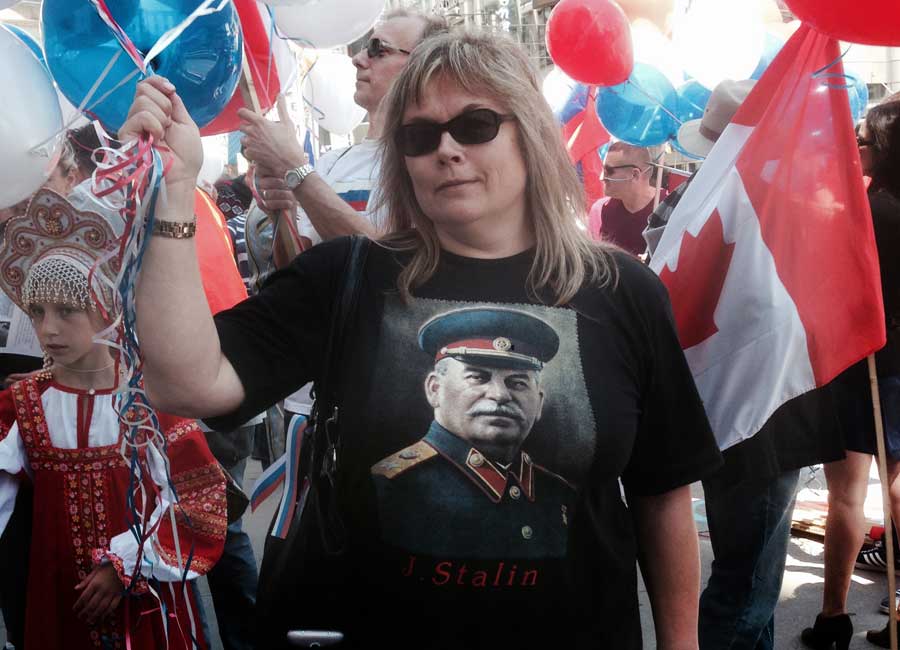
Liberal intelligence implacably opposes the cult of Stalin, while the Russian Orthodox Church nods in approval.
The Kremlin has, in fact, reached a dead end: the elite discuss complex history in a simplified and commanding manner, while the united people become upset with the complexity of things and the Soviet citizen protests.
British historian Timothy Garton Ash classifies the various approaches to history in former communist European countries under three categories. Recollections have moral reasons—“never again the Gulag”. Psychological reasoning, however, provides the people with a remedy for grief and trauma. Political reasoning is based on the hope of learning from history—“history teaches”. Victims and their kin have the right to remember the deceased.
Garton Ash reminds us that suffocating control over the past comes at a political price—if war criminals remain in power, this reduces the credibility of the new system.
In his policy of the past, Putin operates on the ruins of the Soviet Union, but shaping the past in the ways noted by Garton Ash is not acceptable for him.
He has nullified Boris Yeltsin’s achievements in this field. Reckoning with history has been left to writer Lyudmila Ulitskaya and other new dissidents. Lustration and digging in the past is a direct threat to former KGB members. The Moscow apartment bombings of 1999, the poisoning of Aleksandr Litvinenko with polonium in London, the shooting-down of flight MH17 and the war crimes in eastern Ukraine are also skeletons in their closets.
Putin’s history project recalls the observations of Dubravka Stojanović about Yugoslavian textbooks, in which fabricated history was used to justify aggression in the wars surrounding the break-up of Yugoslavia.
The Kremlin’s history project is led by Sergey Naryshkin, Chairman of the State Duma and an alumnus of the KGB school in Minsk, who has now been transferred to a position fitting his education—Director of the Foreign Intelligence Service. When Naryshkin visited Finland, the Finnish “deconstructionists of history”, led by Professor Matti Klinge, were gathered together to pay obeisance and the speaker said that the recognition of Finnish independence by an illegal putschist required additional investigation.

Following this, Historians Without Borders, led by Erkki Tuomioja, organised a conference in Moscow, attended by Russian foreign minister Sergey Lavrov among others. The group is now tackling Ukraine, Donald Trump, the Baltic States and Finnish “nationalism”, but they do not seem to be interested in the Putinist abuse of history.
Originally published in Diplomaatia

